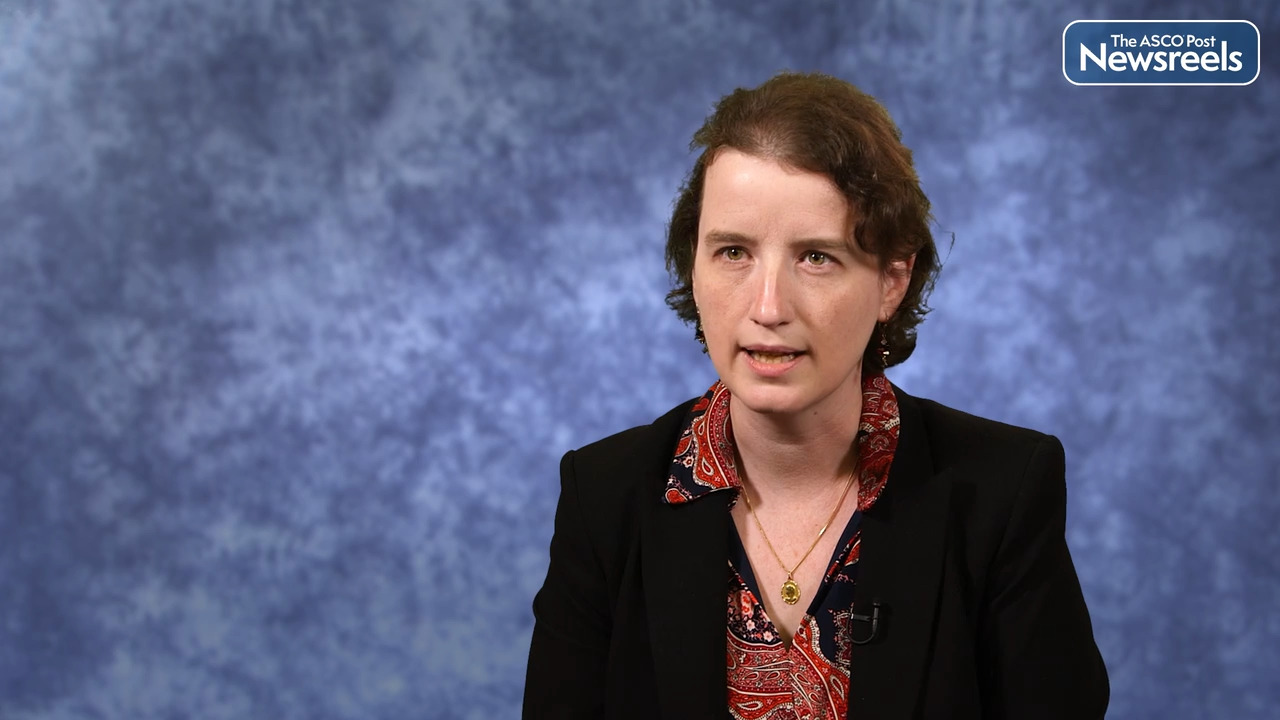Abdul Rahman Al Armashi, MD, on AML: Racial Disparities in Mortality Trends
2022 ASH Annual Meeting and Exposition
Abdul Rahman Al Armashi, MD, of Seidman Cancer Center, Case Western University, University Hospitals Cleveland Medical Center, discusses a retrospective analysis, using a CDC database, in one of the largest subgroup-based racial population studies analyzing mortality trends in patients with acute myeloid leukemia (AML). Between 2000 and 2019, AML mortality was the highest in Whites and the lowest in American Indians or Alaska Natives. The highest rate of increase in mortality was seen in Asians or Pacific Islanders. Dr. Al Armashi talks about the many variables that might contribute to these inequalities (Abstract 600).
Transcript
Disclaimer: This video transcript has not been proofread or edited and may contain errors.
AML is one of the most prevalent forms of acute leukemia. Despite treatment advances, the High V relative survivor rate still has an eerie percent. In the recent data published by the National Cancer Institute, the death threat didn't show any improvement from 1992 to 2020. We conducted a retrospective analysis evaluating the race-specific mortality trends in an old patient with AML in the United States, giving the vacuity of studies evaluating those disparities. We used the CDC Wonder database which contained national mortality and population data. Also, it includes the cause of death from all death certificates filed in the United States. Our population included all patients who died from AML. We also included all races and ethnic groups in the United States from 2000 to 2019. Age-adjusted mortality was calculated per 1 million per person stratified by race and standardized to the US census of 2000. In our study, we found that the age-adjusted mortality was increased equally in both white and black groups.
Also, we found that the mortality trends increased dramatically in the Asian Pacific Islander Group by 25%. It decreased in the Native Americans by 29%. Also, we found that the mortality trends increased by 5% in Hispanics and 3% in non-Hispanic. To our knowledge, this is the largest real-world data study evaluating race and ethnicity specific mortality trends of AML. Multiple variables might contribute to those disparities, including genetics, risk factors, socioeconomic status, equal access to healthcare, and also a response to treatment. Further studies are needed to evaluate those factors and to develop a method to close this gap.
Related Videos
The ASCO Post Staff
Jorge E. Cortes, MD, of Georgia Cancer Center at Augusta University, discusses new findings on vodobatinib, which was administered to patients with chronic-phase Philadelphia chromosome–positive chronic myeloid leukemia (CML) and appeared to be efficacious and safe in people who had received therapy with two or three prior tyrosine kinase inhibitors (TKIs). Vodobatinib remains a potential option for these highly refractory patients. A phase II study (NCT02629692) of vodobatinib is ongoing in CML patients whose disease has failed to respond to three or more TKIs, including ponatinib (Abstract 84).
The ASCO Post Staff
Eileen M. Boyle, MD, PhD, of the Perlmutter Cancer Center, NYU Langone Health, discusses Fc-mediated antibody effector function, inflammation resolution, and oligoclonality and their role in predicting sustained measurable residual disease negativity in patients with newly diagnosed multiple myeloma who were treated with immunotherapy regimens. For the first time, an analysis of T-cell receptors shows that oligoclonal profiles seen on treatment may influence the fitness of the immune response (Abstract 100).
The ASCO Post Staff
Anand P. Jillella, MD, of Georgia Cancer Center at Augusta University, discusses results from the ECOG-ACRIN EA9131 Trial, which showed that using a simplified treatment algorithm and management recommendations made by a group of specialists, resulted in a dramatic improvement in 1-year survival of patients with acute promyelocytic leukemia (Abstract 421).
The ASCO Post Staff
Francesco Maura, MD, of the University of Miami, Sylvester Comprehensive Cancer Center, discusses his team’s findings in which they defined a comprehensive catalogue of genomic determinants of response to DKRd (carfilzomib, lenalidomide, dexamethasone) in newly diagnosed multiple myeloma. The researchers have identified a number of new genomic alterations that explain resistance to the agents currently used in combination regimens (Abstract 470).
The ASCO Post Staff
Jiye Liu, PhD, of Dana-Farber Cancer Institute, discusses study findings that demonstrate KDM6A regulates CD38 and CD48 expression in multiple myeloma. Dr. Liu’s team validated combination treatment with an FDA-approved EZH2 inhibitor plus daratumumab, which can overcome daratumumab resistance in preclinical multiple myeloma models, providing the rationale for combination clinical trials to improve patient outcome (Abstract 148).





